
by MakeYourOwnJeans | jeans |
Have you discovered wrinkles on your jeans? Jeans aren’t immune to wrinkles. Regardless of the cut or style, most jeans will eventually develop wrinkles if you wear them long enough. The good news is that you can remove wrinkles with an iron. Running a steam iron over your jeans will “release” the wrinkles while subsequently restoring your jeans back to their smooth appearance. Do Check the Care Tag While most jeans are safe to iron, you should always check the care tag beforehand. You can typically find the care tag inside the waistband. Like with other garments, it will reveal instructions on how to wash, dry and care for your jeans. As long as your jeans are made of plain denim, they should be safe to iron. If they are made of an alternative material, though, the care tag may advise you not to iron them. Do Wash and Dry You should wash and dry your jeans before ironing them. Ironing a pair of dirty or wet jeans is never a good idea. If your jeans are dirty, exposure to a hot steam iron could result in permanent stains. If your jeans are wet, on the other hand, you may struggle to smooth them out with an iron. Before ironing your jeans, run them through the washing machine and dryer. Do Pull Out the Pockets Another tip to follow when ironing your jeans is to pull the pockets out. Most jeans have four pockets: two in the front and two in the back. Ironing over these jeans may create new wrinkles. A simple solution is to pull out the...
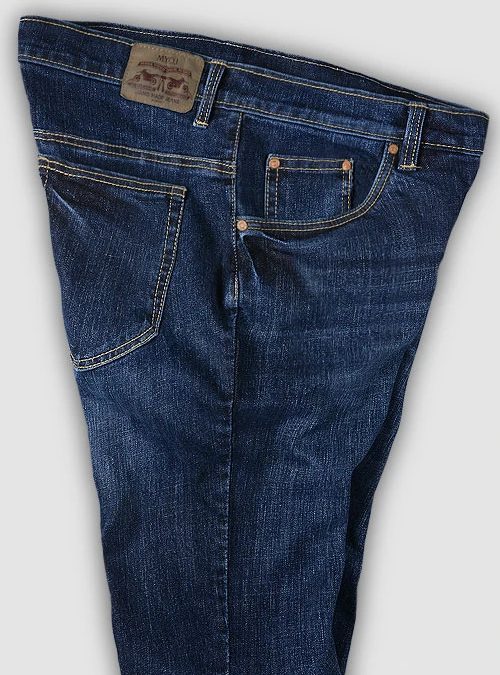
by MakeYourOwnJeans | jeans |
Jeans are available in different washes, one of the most popular being indigo. You can easily distinguish indigo wash jeans from other types of jeans by looking at their color. As their name suggests, they feature an indigo color. While other types of jeans may feature a light blue color, indigo wash jeans feature a dark blue or indigo color. What Are Indigo Wash Jeans? Indigo wash jeans are denim trousers that were washed in indigo dye during production. Jeans receive their color from the dye in which they are washed. Light blue jeans are washed in light blue dye, whereas indigo jeans are washed in indigo dye. You can find indigo wash jeans in different cuts. Like other types of jeans, they are available in boot cut, skinny, straight leg, low rise, high rise, boyfriend and more. Each cut sits differently on the body when worn. Regardless, all indigo wash jeans have a similar appearance. They feature a dark blue or indigo color that’s achieved with dye. Manufacturers wash them in indigo dye, resulting in a dark blue or indigo color. How Indigo Wash Jeans Are Made Manufacturers make indigo wash jeans using a special type of dye. Known as indigo, it’s the defining characteristic of indigo wash jeans. All indigo wash jeans are made with indigo dye. Jeans, of course, are constructed of denim. Denim is a warp-faced textile consisting of cotton with a particular weaving pattern. After being harvested, it’s woven into denim. The newly produced denim is then dyed. There are different ways to dye denim. Most dyeing processes, though, involve bathing the denim in...
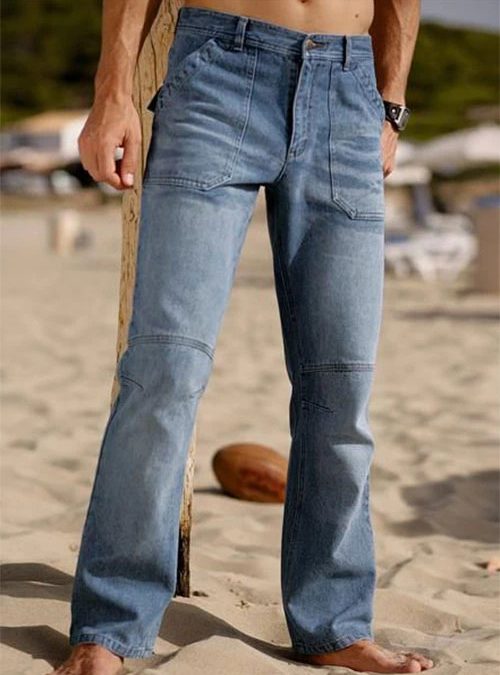
by MakeYourOwnJeans | jeans |
Jeans are available in dozens of styles. While you might be familiar with traditional styles like boot cut, straight leg and low rise, there are probably other styles that you’ve never heard of. Knee joint, for instance, is a lesser-known style. Knee joint jeans are still made of denim, but they feature a joint at each knee section. Traditional jeans, of course, don’t feature any joints. They are typically made of a single piece of denim. Knee joint jeans are made of this same type of denim, but they are characterized by the presence of knee joints. Each knee has a joint consisting of two pieces of denim that have been sewn together. Why should you choose knee joint jeans exactly? #1) Less Wear and Tear Around the Knees Knee joint jeans will typically experience less wear and tear around the knees. Over time, the knee section on jeans will often degrade. It may initially fade, after which it may fray while becoming distressed. Knee joint jeans are better protected against wear and tear such as this. They have a joint at each knee section. These joints help to relax the knee section so that it doesn’t succumb to premature wear and tear. If you’re tired of buying new jeans, only for the knee section to quickly wear down, you may want to choose knee joint jeans. #2) Increased Flexibility Thanks to their knee joints, they are more flexible as well. They are similar to pleated pants in this regard. Both knee joint jeans and pleated pants are flexible. Pleated pants have pleats running down the front of them,...
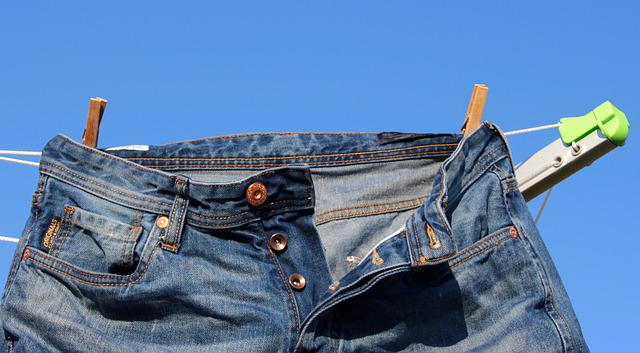
by MakeYourOwnJeans | jeans |
Stretch jeans have become a popular alternative to traditional, rigid jeans. They are still made of denim; all jeans, in fact, are made of denim. Stretch jeans are simply distinguished from their traditional counterparts by their elastic properties. You can physically stretch them without breaking or damaging them. How Are Stretch Jeans Made? Stretch jeans are made like most other jeans: the denim is twisted into the thread, after which it’s used to weave warp threads and weft threads. Warp threads are those that go vertical, whereas weft threads are those that go horizontal. Stretch jeans, however, are made using a special type of denim. Known as stretch denim, it consists of cotton and an elastic fabric. The elastic fabric used in their construction gives stretch jeans their elastic, stretchy properties. Are Stretch Jeans Machine-Washable? While there are dozens of different types of stretch jeans, most of them are machine-washable. You don’t have to hand-wash them, nor do you have to get them dry-cleaned. You can clean stretch jeans in the washing machine. Of course, you should still check the care tag. Stretch jeans typically feature a care tag that reveals instructions on how to wash and dry them. Nonetheless, they are typically safe to clean in the washing machine. What Are Enzyme-Washed Stretch Jeans? You may discover that some stretch jeans are enzyme washed. Unless you’re familiar with enzyme washing, you may assume that they are the same as all other stretch jeans. What are enzyme-washed stretch jeans exactly? The term “enzyme washed” refers to a production process in which the jeans are bathed in an enzyme solution....
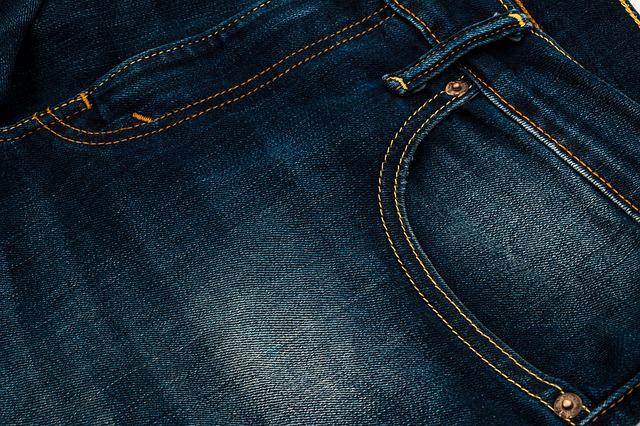
by MakeYourOwnJeans | jeans |
Want to minimize your environmental footprint? A Pew Research Center survey found that three-quarters of U.S. adults are concerned about the environment. In light of Earth Day, there’s no better time than the present to take action. Following these six eco-friendly tips on maintaining jeans, for instance, will minimize your environmental footprint. #1) Choose 100% Denim Jeans When shopping for jeans, check the tag or description to see what they are made of. Jeans made of 100% denim are better for the environment than those made of denim and a synthetic fabric. Denim is an organic fabric, meaning it’s all natural. Synthetic fabrics like nylon are not all-natural. They are derived from chemicals. By choosing jeans made of 100% denim, you can rest assured knowing that they are all natural. Jeans made of 100% denim don’t contain any synthetic fabrics in their construction. Rather, they are made entirely of denim, which is essentially cotton. #2) Wash Less Frequently You don’t have to wash your jeans each time you wear them. As long as they aren’t visibly dirty, you can typically wear them multiple times. Doing so, of course, is good for the environment. Washing your jeans less frequently will preserve water and energy. Jeans also last longer when washed less frequently. Washing machines are aggressive. As your jeans tumble around inside of the drum of a washing machine, they’ll degrade. You may not notice any signs of damage initially, but washing your jeans dozens or hundreds of times may eventually degrade them. Therefore, you should consider washing them less frequently. It’s good for your jeans, and it’s good for...
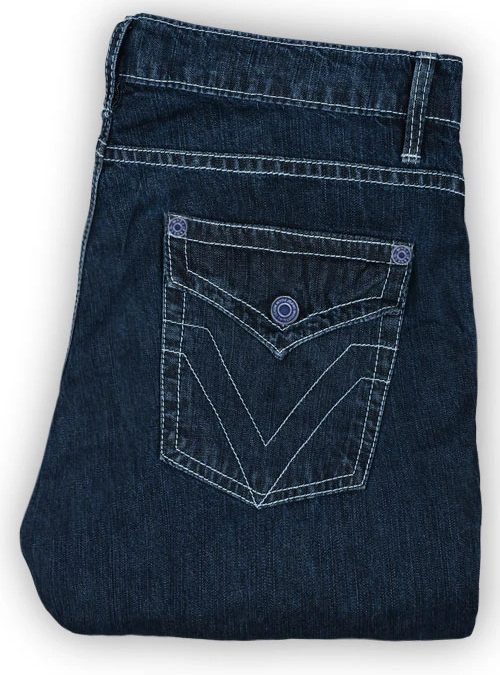
by MakeYourOwnJeans | jeans |
The next time you go shopping for pair of jeans, you should consider choosing lightweight jeans. Jeans are available in different weights. There are lightweight, medium weight and heavyweight jeans. While they are all made of denim, the total weight of their respective denim varies. Lightweight jeans weigh less than both medium and heavyweight jeans. With their lightweight construction, they offer several benefits. Why should you choose lightweight jeans exactly? Below are seven undeniable reasons to choose lightweight jeans. #1) Easier to Wash Lightweight jeans are easier to wash than medium and heavyweight jeans. All jeans require washing. Regardless of how much weight, you’ll have to wash your jeans so that they don’t develop stains or other superficial blemishes. With that said, lightweight jeans are typically easier to wash than medium and heavyweight jeans. They don’t require as much water, nor do they require as much detergent. Lightweight jeans are made with less denim, which makes washing them a breeze. You can wash them using less water and less detergent. And because they require less water and detergent, they offer cost-savings benefits. You’ll probably up save money when washing lightweight jeans. #2) Dries Quickly You can rest assured knowing that lightweight jeans will quickly dry. After washing them, of course, you’ll probably want to dry them. You can either line dry or machine dry lightweight jeans. With their lightweight construction, they’ll quickly dry. This rings true anytime your lightweight jeans get wet. If you wear them on a rainy day, for instance, they’ll quickly dry when the sun comes out and it stops raining. All jeans will dry when...

















